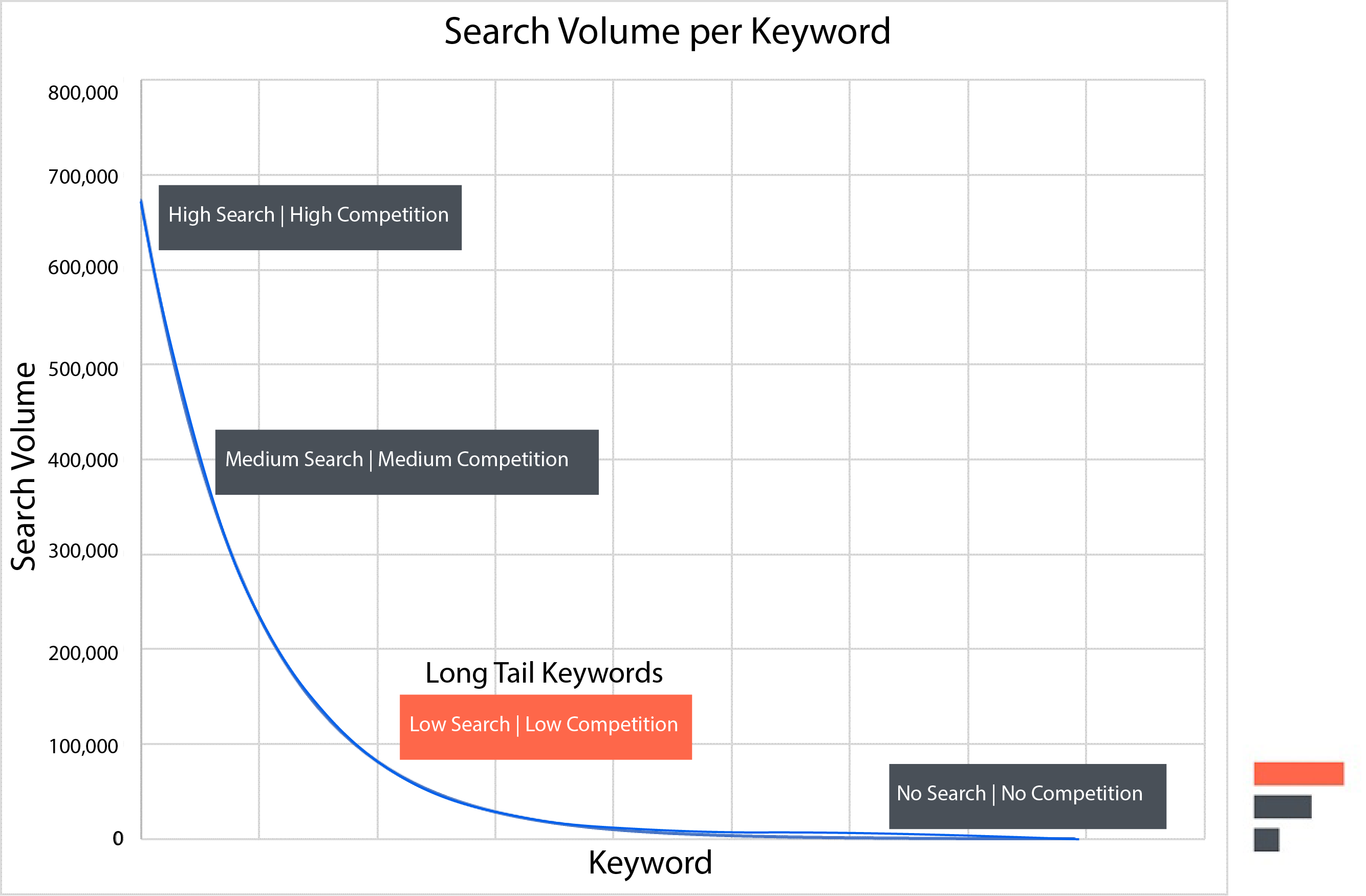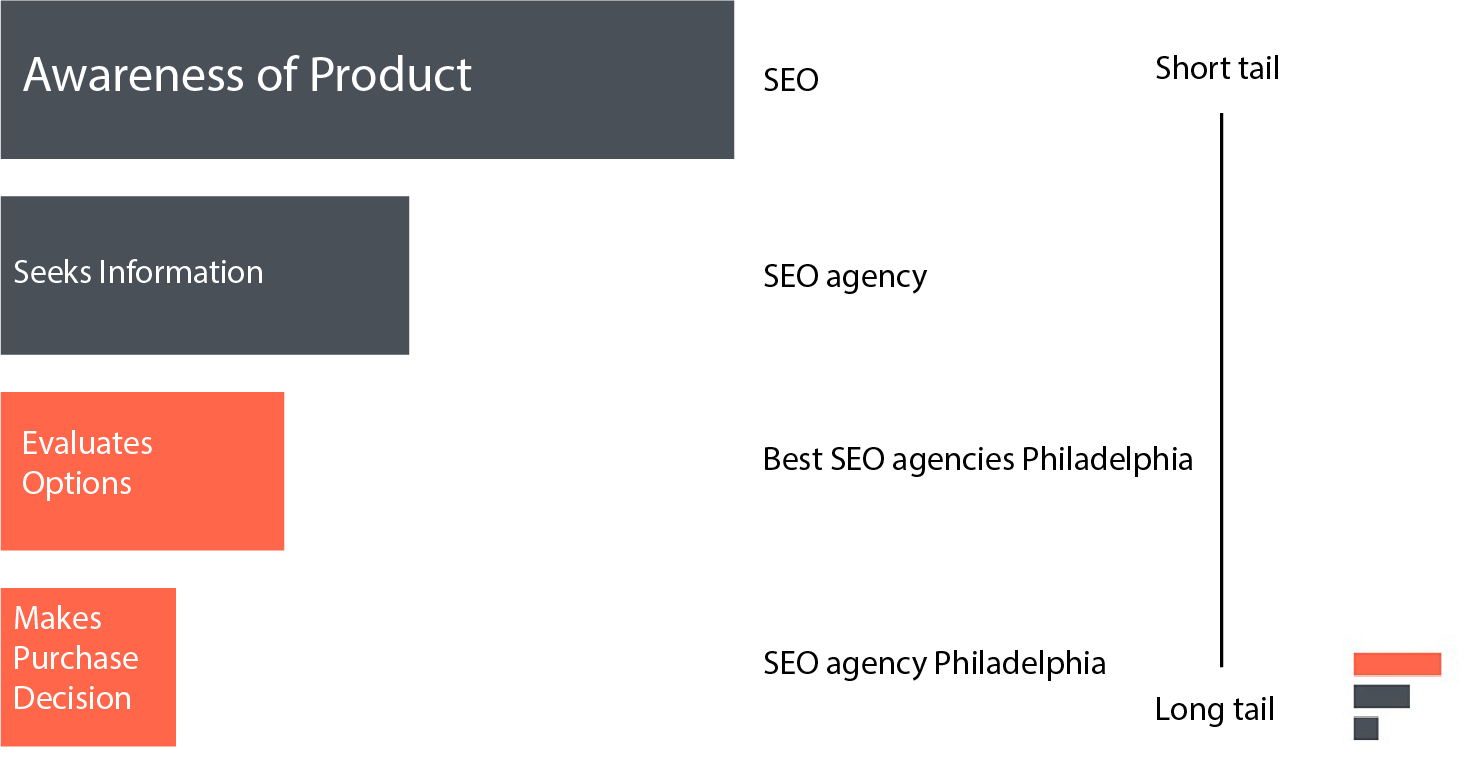Updated: Apr 26, 2019
Long tail keywords contain 3 or more words and are more specific than short tail keywords. They are often less competitive and have less search volume than short tail, but reach a more defined target audience.
A study on Amazon user habits revealed that consumers benefit from access to product variety in online book stores ten times more than the product price. Thus, the primary value of purchasing online to consumers is the variety of products accessed through long tail keywords.
There are many reasons why you should be using long tail keywords for your SEO strategy. Most notably, you are connecting with users on a level that is more unique to their needs and in a place where they are more willing to make a purchase. These 5 reasons explain why you should, and how you can, use long tail keywords in your SEO strategy.
1. Balance of search volume and competition
When deciding on your keyword group, there should be a space between keywords that have very high search volume and keywords that have very little search volume. There is a parallel relationship between search volume and competition that can be stated like this:
The high-volume keywords usually have very high competition and you will struggle to rank, whereas the low-volume keywords will have low competition and will be easier to rank, but there won’t be many people searching for them.
That valuable space between the two extremes is made up of long tail keywords that match user interest. A long tail keyword that people are specifically searching for may have low competition due its specificity, but long tail keywords will have surprisingly high relative search volume if they are targeted correctly. On that point…
2. Targeted Users
Long tail keywords are simply a more specified version of the short tail keyword. Where the short tail covers the larger concept, the long tail examines a more specific detail within that concept.
As an example, our keyword list could be:
| Keyword | Search Volume | Competition |
|---|---|---|
| SEO | 673,000 | High |
| SEO agency | 14,800 | Medium |
| SEO agency philadelphia | 170 | Low |
It is understandable to see this chart and be underwhelmed by the 170 monthly searches to ‘SEO agency philadelphia.’ The truth is that you can’t base all your content on one long-tail keyword, but you can create unique content that will reach that long-tail audience.
It takes a domain-wide strategy to rank well for the keyword ‘SEO,’ but you can rank well this week for the long-tail keyword that defines you specifically. Not only that, but there are 170 users in Philadelphia that are looking for a local SEO agency, in a much better position to convert than someone anywhere in the world looking for the term ‘SEO.’ This brings us to the third benefit for long tail keywords.
3. Audience is nearer to conversion
Searching for a specific product or service signals that a user is looking to make a purchase. Someone searching for ‘SEO,’ may be interested in a definition or techniques on how to use it correctly, but someone searching for ‘SEO agency Philadelphia,’ is interested in the service and is looking to become a customer. This can be understood in a traditional sales funnel.
By targeting your keywords to reach the users at the bottom of that funnel, you will be connecting with them at the point in their digital consumer decision journey when they are most prepared to make a purchase.
4. People are searching differently now
Times have changed. People are talking into their phones, and if they are searching on Google they are usually interested in something specific. As Google has become more of a household product globally, the average fluency while using it has improved over time, so people are comfortable enough with the service to know how to search for exactly what they need. In other words, people are more comfortable using long tail keywords.
People want their specific needs to be satisfied, so if you can fulfill that need then you will find a very high rate of conversion.
5. More content
By building a list of long tail keywords that are highly relevant to your products or services, you are also building a list of pages that can be created for your website. It is good practice online to always be creating content in some way. It is important because:
- Google appreciates when a site regularly adds new content
- Each new page will add more traffic to your site
- Each long-tail search will have its own unique page appear in the search results, which is much more likely to attract the user than your home page
Now that you have found the perfect keyword that defines your company, you have access to a large number of even more specified long tail keywords. These can include your individual products and services, common questions about your industry, or common questions for each individual product. Your list can look something like:
How to optimize for near me searches
When to use subdomains and subdirectories
Bing vs Google
These in-depth long tail keywords are now prime opportunities for blog posts or deep pages, just as Fourfront has done with SEO-related keywords.
With a new understanding of the value of long tail keywords, as well as some strategies to use them effectively, now is the best time to begin implementing your long tail SEO strategy.











